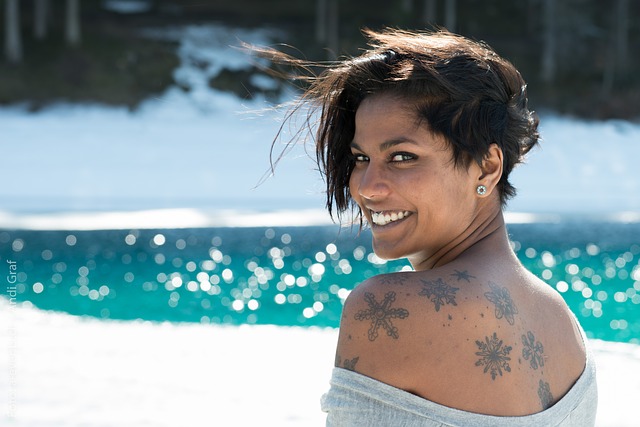
“Man cannot discover new oceans unless he has the courage to lose sight of the shore.” ~Andre Gide
I have walked on water.
The frozen wasteland known as Chicago had kept me inside, wary of the intense cold that was breaking records that particularly frigid winter. But after interminable snow days, I began to feel like a caged animal that needed to break free.
I woke early one morning, overcome with the urgent need to connect to something living, something wild. I wrapped myself in countless layers like the kid in The Christmas Story and ventured out into the urban tundra. I felt compelled to walk to the beach that was a few miles from my house.
An eerie, otherworldly feeling washed over me as I walked, achingly aware of the stark, endless whiteness all around me. The world itself felt as it was hung in frozen suspension and apprehension. Everything seemed to be hushed in reverence.
When I reached the shore, I was hyper aware of the need to maintain a safe distance from the water, but I felt compelled to get as close as possible.
As I moved forward across the frozen sand, I tried to gauge exactly where the land ended by using various items as points of reference—a fence, a wooden bench, a recycling bin. I inched my way toward the lake until there were no more reference points, and then became as still as the land beneath me. Or what I thought was land.
I looked down at my feet and realized I was standing on a frozen wave, not a snow covered sand dune as I originally thought. I had walked out too far. I could both hear and feel the movement of the wave beneath my feet.
I felt a juxtaposition of fear, exhilaration, and an overwhelming sense of weightlessness. My first instinct was to run, but I wasn’t sure of my footing. I was terrified that if I shifted my weight too quickly, I might fall through. I had no idea how deep the water was where I stood.
At that moment I zeroed in on my true purpose for coming to the water. I reached into my pocket and pulled out a little bag filled with small strips of paper like confetti. On each one I had written something I wished to release from my life.
- The fear that I will never find the type of love I want and need.
- The belief that I am unlovable.
- The commitment to being alone.
I opened the bag to the wind, letting the belief-covered papers flutter out over the frozen lake. I did this quickly because I sensed the danger to my body on that unstable surface, and the danger to my heart if I held onto those stories a moment longer.
With my task completed, I gingerly walked back to solid land. I let out a deep breath and knew so much had been released with those papers still floating on the wind.
That moment on a frozen lake taught me a few very important things about surrender.
- Surrender is about vulnerability and receptivity.
- The opposite of surrender is resistance and control.
- And it all comes down to fear and trust.
I realized that my heart had become like that lake. A living thing that is supposed to flow, constricted by a lack of warmth and space into a frozen and dangerous place.
One of the ways we keep our hearts frozen is by holding on to negative beliefs. These beliefs may be seem like they are about others or life in general. Usually, however, they are based on our perceptions. Negative beliefs are born from our wounds and stories.
Eventually, every life experience becomes colored by these beliefs. Everything we see, say, do, and even feel is filtered through these limitations, judgment, patterns, conditionings, and doubt. The sad and scary part is that these beliefs tend to hide themselves in our subconscious, making us think that we are acting from free will.
We may not even be conscious that we are holding on to negative beliefs.
Unconsciously, we begin to nurture our negative beliefs without even being aware that we are doing so. We feed them and help them grow by giving them energy. We affirm them by attracting experiences that validate their existence. This becomes a vicious cycle. Holding on to negative beliefs justifies our need to be right.
Many of us hold on to our grievances and emotional scars with fierce protection. They become like badges of honor.
We think that without our constant vigilance, the memory of our wounds or broken hearts will be forgotten. We believe that we are some how “honoring our personal story” by holding on. If we do not act as the constant “keeper of our wounds,” our suffering will have been in vain.
But spring must come if life is to flourish again.
We must allow our hearts to thaw. We need to frequently evaluate our belief structures and release the stories that no longer serve us.
Releasing our attachment to our personal histories doesn’t invalidate the emotional pain we suffered. It doesn’t mean that the defenses and barriers we erected to protect ourselves weren’t based on a real need for self-preservation at those times. Instead, it means that we assimilate the lessons we have gained from the experience while loosening its ability to control our lives.
Just like the coldness and bareness of winter allows the Earth to rejuvenate, and ultimately makes everything stronger, so too do our personal winters allow us to access our depths. Every wound makes us stronger as we heal it, and gives us greater access to our power.
Letting go of beliefs puts a great responsibility on us. If we connect with our personal power we must give up the illusion that we are victims. We can longer view ourselves as passively vulnerable to the whims of others. We now must take responsibility for how our life unfolds.
This realization is a lot scarier than standing on a frozen lake.
To truly open our hearts, to truly wield our power, we must be willing to participate in life.
This requires both owning our part in situations and allowing experiences to unfold as they will. Accepting others’ actions and emotions without making them fit into some box as a hero or demon. And especially releasing our mental constructs about how life should be, what we should or should not be doing, and how other people should interact with us.
Releasing expectations and resistance is one of the most empowering acts of life. Resisting what is can be emotionally, spiritually, and physically exhausting. We get stuck in patterns that begin to define how we interact with the world. And even though they are painful, because they are familiar and usually hidden, we can stay stuck for years.
I had developed many of my beliefs to protect myself after a series of breakups and broken hearts.
I convinced myself that believing I wasn’t worthy of love was safer than opening myself up to the possibility of love. If I never opened my heart to anyone, I would never be disappointed or have to experience the excruciating pain of heartache.
I was keeping myself lonely and cut off from life. Trying to protect myself from pain, I was actually constantly hurting myself more.
When I finally relaxed enough to let go of my old beliefs, my life began to flow with greater ease and grace.
I walked out onto that frozen water because I needed to have a close encounter with life. I needed to let the primal elements cleanse me of my outmoded ways of being.
I went beyond the fear and conditioning because, finally, being alive mattered more than being comfortable. Now I recognize that I must trust that life will always provide the situations and experiences required for my evolution. And that surrender is the only way to be free.
Photo by Andi_Graf
About Alana Mbanza
Alana Mbanza is a freelance writer and the author of LoveSick: Learning to Love and Let Go. Even more than a writer, she strives to be an active agent of creation, choosing to see and create life through the lens of love. Visit her website for more information about her freelance writing and coaching services.


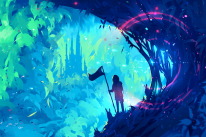
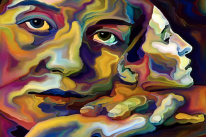
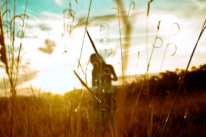





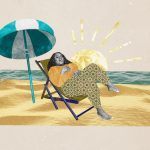
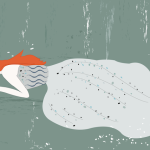
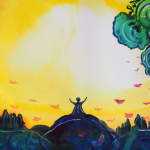
 Though I run this site, it is not mine. It's ours. It's not about me. It's about us. Your stories and your wisdom are just as meaningful as mine.
Though I run this site, it is not mine. It's ours. It's not about me. It's about us. Your stories and your wisdom are just as meaningful as mine. 
Alana, thanks for your beautifully written story of walking on water. I love the idea you are presenting that we each need to take responsibility for the stories we create, which then shape our lives.
Thank You Alana for again writing to my heart; everything you write has always touched me deeply, but this one is different, I feel this one is life changing. I plan to read this every day till it sinks in and I will send it to all my friends. Thanks again.
the levels of action
‘all worldly persuits may lead to misfortune and sadness’
‘no desire, no pursuits, no sadness’
‘If you do not master desire, desire will master you’
to live without cause or effect – not ruled by desire – to live by enlightenment.
to live by understanding of cause effect – limited by buddha
to live by understanding of effect – limited by buddha
to live without understanding of cause and effect – to live by buddha
to live without reward or consequence, not ruled by greed or fear – to live by buddha
to live by understanding of reward and consequences, ruled by greed and fear – forms of desire
to live by understanding of reward, ruled by greed – a form of desire
to live by understanding of consequences, ruled by fear – a form of desire
to live without understanding of reward or consequences, to live by desire
Budhism is the desire for peace, and freedom from suffering. The Budhist sees the turmoil
and strife of existence, caused by the desires and pursuits of man. The Budhist concludes
that pursuit leads to a form of slavery – that of servitude to desire. So Budhists renounce
desire, and in so doing renounce pursuit. In this they separate themselves from reward and
consequence, but do not understand them.
Such is the way of Buddhism, such is the way of rejecting action. For cause–pursuits, and
the effects of pursuit, arise from desire. But desire attained is only achieved through
fate, fortune, or understanding.
Yet by removing desire, by removing themselves from the causes of the world, they come then
to understand the effects of other causes. For no man who drowns in a sea can understand
the ocean. He must first swim to shore, to see the truth of all those who still drown in it.
That desire in, of, and purely for it’s own sake is death.
But at first, afterwards, he does not understand why they drown, only that the only way not
to drown is to swim to shore. This is to live without understanding of cause and effect,
to view life instead as a chain of rewards and punishments or consequences. One sees rewards
and punishments as earned or unearned but always being given out by some other hand.
One sees actions and reactions, causes and effects, outside the mold of slave/master
and says ‘I do not eat from the hand. I am the hand that feeds.’
‘I am not chosen for. I choose.’
The buddhist chooses to choose, and that choice is to choose to abstain from desire.
What I am saying is when you reach enlightenment you will realize you have only just begun your path
and that enlightenment is only just the first golden rays of a realization, the hint that
even our very choices themselves are colored by desire, and so long as desire rules in our heart,
our choices, and our freewill are an illusion. The only real choice we have is whether or not
to choose. To choose not to choose is to choose, it is a choice. One has to make it, or not to
make it, and then it is made whether you decide or not. For choosing not to choose is a choice,
the alternative is desire, the alternative is slavery, the alternative is death.
The First choice, the primal choice, is that of biting hunger, and bitter cold. For you may say
on the road to buddha, “I do as I want, and I want nothing, so I do nothing”
but the body withers all the same for lack of bread, and lack of bread for lack of doing.
This world is one of action and reaction, yin, and yang. For those who do not do must show the
consequences of their choice, must reap the whirlwind and dust, and their body reacts, and the effects
are made known. For if you do as you want, and want nothing, then you want something, which is to do nothing, and the effect is you become nothing, for wanting is a choice, and doing, and not doing,
choices, what matters is why we choose. The buddhist has no why, save for the singular desire, when all
else have gone — to be free…of suffering, and the slavery of want.
But all want, and all choices give rise to other choices.
And if peace, and freedom from suffering can be attained then it is a gift, and despite all the evils of
existence, then life is too for there is a means to escape, and THE CHOICE. But what is the choice
if the only pleasant decision is escape? To consciously choose to choose, to choose not to exist must
then also be a valid answer. But what meaningful answer can be arrived at by choosing suffering, when
the much better alternative, escape, is available you might ask? But the enlightened buddha knows,
there is the first choice, and the first desire, and beyond, and below that, there is nothing. For when that desire is gone there is apathy. But where that desire yet exists, and the choice is made to suffer anyway, it is noble.
How then, suffering with strife and desire, making choices, are we any different from all the others?
We are all buddha, but some are not enlightened, and the enlightened only slightly more so. For
we CHOOSE suffering, (or not to suffer, but that is the lesser way, the false path), while the
sad, tired, angry, fearful, sickly buddha’s do not choose suffering for they do not know anything
but desire.
It is given to those who know The Truth, that suffering is a choice, to choose, and for those among them
to go forth and enlighten the buddha who still struggle in the sea, that they may liberate themselves. And who among the enlightened are called to this, to decide? Those who understand the first desire to be
the base of all the rest, to be the final struggle, the eternal path that they must wander against always, the desire to desire, the want to want, the temptation of temptation. And it will never stop all the long days until you lay your head at last forever and the grass and stones of the road mark your final
resting place, but you will have been free, free of punishment and reward, free of cause, and effect, free of suffering and strife.
But there is another way, a road less travelled. For you may suffer on with the first desire, the
want of wants, but it need not be a heavy burden. Those who have reached this great place, who
chose to go on, learned, the desire may be tranformed, the dark into light, and the light into dark.
By choosing suffering they must first understand WHY, not merely for the sake of nobility, to choose
to suffer while all the others suffer helpless. The WHY must be divorced from the YOU. For decision,
and desire, like the fork in the letter Y, split us inside, and that is the true source of strife
and suffering. And we say to ourselves “What is life all about?”, and we see the buddha drowning, a reflection of ourselves, and say of them “OH, U!”
It is the realization that just as strife and suffering arise inside of us because of
our external selfish choices and selfish desires, so peace arises within us when our external choices
and desires are selfless. And when we reach this state, the burden is that of desire for peace,
and we live by understanding of cause and effect, and so we become agents of peace.
Buddhism is the philosophy of selfLess reconciliation and plenty.
For desire is the root of strife, and strife the root of war, and war the root of want, and where there is no desire, there is no want, for there is no war, and there is no strife, and plenty surely follows.
—The Book of Peace—
First, is do to others
//no understanding of other. Mindless instinct, without comprehension or any choice.
Second, is do to others as you want
//reward
Third, is dont do to others unless you want them to do to you
//consequences or punishment
Fourth, is do to others as you want, dont do to others unless you want them to do to you
//reward and consequences
Fifth, is do to others as they do to you
//law of reciprocation, the beginning of enlightenment, the source of the commandments in western faiths, and modern law
The sixth is, do not do to others as they do to you
//forgive people the harm they do, do not be consumed by anger or hatred, do not act out of wrath
The seventh is do not do to others that they may do to (you or others)
//do not directly enable evil or bad men
//to do physical, obvious harm, abstain from bad company.
The eighth is do or do not do to others that they may do or do not to you / they may not do
//understand bad things happen sometimes, and it is not always in our control
//and that some choices may seem right or wrong at the time, but that in fact
//like any buddha, we may only be living in illusion, and that the choice was not a choice at all.
The ninth is do not to you, do to others.
//do unto thy neighbour as if he were your brother. Treat strangers with kindness and hospitality.
The distinction in the ninth at “do to others” is an important one, because it does not say
“do for others.” The path must be chosen by someone, and that choice cannot be made for them.
You can only guide them in the right direction, encourage them on the way, light the path a little
bit ahead, and often that which is done FOR others can have an have an effect against them.
Thank you for sharing this incredible story. Living in Chicago, I understand the frustration and reflection that came with our long, cold winter. Hoping that this month’s sunshine can provide you with light and happiness!
http://thechicagolifestyle.com
So pretty!!! Thanks for sharing such lovely words…
Beautiful analogy and story. Thank you for sharing. This phrase resonated with me, “being alive mattered more than being comfortable.”
Thanks for sharing your story. It was beautifully written.
Wonderful words, thank you! <3
Amazing story, Alana! Pure inspiration! Thank you for sharing.
WOW. what an amazingly well written beautiful story. thank you. For me this is my favorite tinybuddha post so far, gonna have to read this one every day 🙂 some good points I never thought about before.. and you put it all so well. thank’s again, keep well
This story gave me hope about my own love life. Thank you.
“Negative beliefs are born from our wounds and stories.” Although is seems so obvious to me now, I never realized how much negativity in our lives comes from a sad event, etc.
Thank you – I really needed this. Beautifully written, too. 🙂
Hey Dee! It’s great to hear from you again! I am so glad my writing speaks to you. Keep in touch,
Alana
Aw, that means soooo much Leah. Thanks for reading!
Thank you for reading!
Thanks so much, Lauren. The warm weather is absolutely magnificent and has provided much needed renewal and rejuvenation. Enjoy summertime Chicago…we’ve earned it lol! 😉
Jake,
It’s so great to hear from you. Thank you for taking the time to read and I appreciate the kind and supportive words!
Thank you!
I’m so glad my story could give you hope, Talya. That is the exactly why I write! Thank you!
Aw thank you Lovelyn and I LOVE your name! 🙂
Thank you so much, Sina!
The pain prevents us from seeing the wounds we’ve worked so hard to conceal or forget about but I strongly believe that once you’ve gotten a glimpse “behind the veil” so to speak, you are forever changed. There is a fundamental growth that happens when you are able to look deep within and discover the hidden parts of yourself. There is healing in that act. Take care, Makayla.
Hey LesyalK! Great to hear from you and thank you for your kind words!
This is a beautiful post. I am stuck in a 10 year cycle of negative beliefs and the fear and anxiety which rules my life has got worse and worse. I know I need to change, but I never managed to sustain it. How did you overcome that part of you that wanted to hold on to the ‘comforts’ of negative beliefs? I still haven’t managed to overcome that.
Very inspirational! Thanks for sharing your experience.
I found the truth in each and every line of your writing, like a mirror held up to my life. I read about half way down and I just couldnt read on, this article reflected so many truths that I didnt want to face for such a long time, I was affected and struck by it in a profound way. Thank you for showing me the truth.
Thank you for sharing. This is truly awakening for me … “releasing our mental constructs about how life should be, what we should or should not be doing, and how other people should interact with us”. it is all about perception and interpretation. Letting go is the way forward.
Hi Alana very powerful post. I feel a sense of connection with the words you used in your story. I am leaving a marriage of nearly 30 years which was based on beliefs that kept me stuck and believing this was it. The day I changed my beliefs and believed I had a choice, was the day I got my life back.
I knew the first step I took by going by my heart would cause a severe reaction. Many no longer associating with me since the day I decided to leave the marriage.But that’s okay. I no longer live for other’s lives (or opinions) as I had done all my life (today at 53yo) but for mine.
Having gone through so much because of having expectations and resisting reality, made my struggle so much harder and very painful. But choosing to not stay and no longer continue living like a victim, gave me hope to believe I can be happy again.
As you say ‘being alive mattered more than being comfortable’. You are so……….right!
Thank you for your powerful words.
the greatest thing to do if you truly love somebody is to let the other one go if he/she so wishes…
Absolutely love this post! Alana, you really got to the heart of what holds us back. Lately, I have discovered my deepest and most negative beliefs about myself and the world. I am trying to let the past go but how do I really free myself from these maladaptive thoughts? How do surrender and feel free? These days I often feel confused, irritated and sad even though I have been living with more awareness than ever. Does all this pain mean I am heading in the right direction? I am waiting for the day when I feel I can truly be myself and stop living with judgements, resentments; fear and anxiety; the day when my heart melts and becomes as open as the sky. Thank you for this. I will be reading it again for sure.
I have the same question, Amy. I feel like I have this internal battle constantly going on. I, too, feel like I have been in a cycle and I want to break free. How do we change deeply engrained beliefs that we’ve held onto for so long? I think anxiety may actually be a message our body is sending us, telling us the changes we need to make. Perhaps it gets darkest before the dawn.
Hey Char! It’s great to hear from you, how have you been? Thanks so much for reading!
Artemis,
I’m so glad you were able to connect with my words. You are the true inspiration; finding the strength to leave a relationship that is no longer healthy for you. It’s so true that when we begin to live more purposefully and authentically, we fundamentally alter everything and everyone around us. Some people will be supportive, some will be confused, and others will be downright hostile to the change. Such is life and the natural evolution of things.
Thank you for taking the time to comment and many blessings to you!
Amy,
I think the most important thing I’ve learned is that change is a process which means there will be times of growth and times of regression. Instead of expecting myself to “overcome” my negative beliefs or instantly become more positive (and beating myself when I’m not), I try to be patient with myself and honor wherever I am in the process. Also, I don’t think it’s so much about sustaining the change as it is about approaching each difficult situations as a new opportunity to make the conscious choice not to let these thoughts and feelings completely control my actions.
I hope my writing didn’t suggest that after this one encounter I was immediately healed. That’s certainly not the case. I still experience feelings of intense fear and unworthiness. I still become frustrated with dating and wonder if I’ll be alone forever.
However, in each of these moments I realize that I have a choice. I can either sink deep into the comfort of my negativity and marinate in it because it makes me feel safe and then act out in ways that are harmful (ie. texting an ex boyfriend which will ultimately lead to more pain). Or, I can acknowledge the feeling as it occurs and then choose to manage them in more effective ways (ie calling a supportive friend, writing about it, etc.). It’s all about creating a kind and forgiving relationship with yourself instead of an adversarial (I must control myself) type of relationship.
Hope this clarifies things, many blessings to you!
Harmony,
I think my response to Amy may somewhat address your question as well but I also wanted to speak directly to your point about anxiety being a messenger.
In another post I wrote here on Tiny Buddha called, When You Fear Making the Wrong Decision, I talked about how I began to experience an increase in “negative” emotions after choosing to live a more purposeful and present life. I attributed this to the fact that I was finally listening to myself and as a result, had developed a greater sensitivity to things that no longer felt right to me.
This may be what’s happening to you. Your body/mind/spirit may be trying to clue you into situations/people/experiences that are harmful to you. I think that these messages are always around us, guiding us, but because we spend so much of our time being distracted, we miss out on them. Choosing to be conscious and aware of your intuition gives that inner guide permission to speak to you more authoritatively. Even though it may seem distressing, I would take this as a sign that you are on the right track.
This is so beautifully written with such profound messages. Thank you, I truly enjoyed reading it and to be reminded of letting life flow.
Great post!
FANTASTIC and BEAUTIFUL post!!! Thank you for sharing your experience, and insight! This beautifully written post is truly inspiring! 🙂
This may be the best article on finding meaning from life’s lessons and one od the most motivating ones on taking control over our own happiness. And I have read many. Please, keep up your wonderful work! Blessings!
Wonderful!
Hey! Yes I enjoyed the read. I’ve been good. So glad to see you are following your dreams and doing what you love.